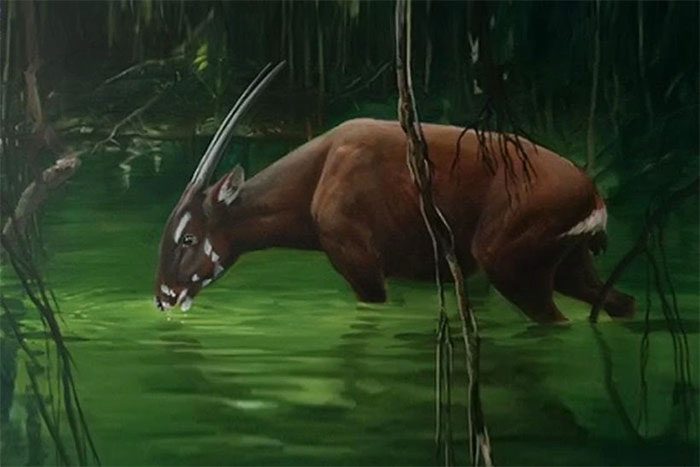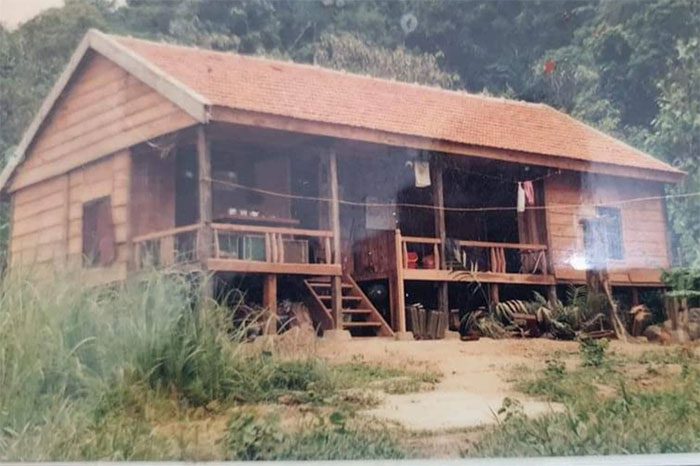The 31st Southeast Asian Games has chosen the image of the Saola as its mascot. There are still many fascinating mysteries surrounding this animal, which shocked the world in 1992.
In 1992, during a survey conducted by the Vietnamese Ministry of Forestry and the World Wildlife Fund (WWF) in Vu Quang National Park (Vu Quang District, Ha Tinh), experts discovered a new species, the Saola, for the first time.
The name “Saola” is transliterated from Thai and Lao, meaning “straight and tall horns.” The Saola has white spots on its face, “like stars shining in the deep forest.”

The 31st Southeast Asian Games has chosen the image of the Saola as the mascot of the event.
The discovery of the Saola caused a sensation worldwide, as scientists believed that finding a large mammal at the end of the 20th century was unlikely. However, for many residents of Huong Dien (now Tho Dien) and Huong Quang (now Quang Tho) communes in Vu Quang District, Ha Tinh, the image of the Saola was not unfamiliar. Before the 1990s, locals had hunted many Saola individuals, but at that time, they referred to it as a long-horned goat.

Scientists conducting fieldwork at Vu Quang National Park (Photo: Mr. Tu provided).
Mr. Nguyen Tien Thanh (born 1968), who was born and raised in Huong Quang, is well acquainted with this animal. He recounted: “In the past, the Huong Quang area was very wild, with dense vegetation, and only about 12 households lived there. This animal used to be concentrated around Chi Loi Stream, which took us about an hour to walk through the forest from where we lived.”
According to Mr. Thanh, life for the people of Huong Quang used to rely heavily on the forest. They primarily hunted and logged for survival, so the Saola was one of the animals hunted for food.
“We mainly used hunting dogs to catch wild animals. We called the Saola a long-horned goat because it has a beautiful pair of long, straight horns. At that time, we hunted it for food, not knowing how rare it was. Occasionally, people would catch this animal. It wasn’t until the authorities informed us that it was a rare species, discovered for the first time, that we became aware of its significance,” Mr. Thanh shared.

Mr. Tran Binh Tu with documents about the Saola. (Photo: Duc Pham).
Mr. Tran Binh Tu, a former official at Vu Quang National Park, was asked by a research team from the Vietnamese Ministry of Forestry (now the Ministry of Agriculture and Rural Development) and WWF to guide and collaborate during their research expedition at Vu Quang National Park in 1990. He stated: “The purpose of the survey was to assist the management board of the conservation area in research and protection of genetic resources, species, and biodiversity.”
Mr. Tu recounted that during the survey, the team visited a house near the forest edge and discovered a pair of beautifully colored, slender animal horns being kept there. The scientists were truly astonished because this pair of horns was very special and did not resemble any previously documented animal horns.

Research and conservation station for Saola within Vu Quang National Park (Photo: Mr. Tu provided).
“This family claimed that these horns belonged to a long-horned goat. They had caught and killed it while farming. They found the horns beautiful and kept them as decoration in their house. The scientists at that time concluded that this was indeed a new species and purchased the horns for further research and investigation. By May 1992, the survey team announced that these horns belonged to the Saola, a member of the bovine family, and it was the first time this species had been discovered in the world,” Mr. Tu explained.
Immediately after the Saola was announced as a new species, the Vietnamese Ministry of Forestry and WWF decided to establish a research and conservation station for the Saola within Vu Quang National Park.
“Saola can weigh up to 100 kg and stand 84 cm tall, with beautiful horns that can reach 50 cm in length. Saola is a shy species, with a keen sense of smell, making it extremely difficult to detect them. From 1992 to 1997, researchers only collected a few foot samples without seeing any Saola individuals,” Mr. Tu noted.
Image of the head and horns of a Saola that locals used to hang in their homes (Photo: Provided by locals).
Mr. Nguyen Viet Hung, Deputy Head of the Science and International Cooperation Department at Vu Quang National Park, further explained that the Saola is a valuable living specimen for researchers studying ancient animals, as its genetic makeup has remained unchanged for millions of years, existing and adapting to its environment until now.
“Saola is considered one of the most mysterious ancient mammals in the world, existing only in the pristine mountainous forests along the border between Vietnam and Laos,” Mr. Hung stated.
According to Mr. Hung, since the Saola was announced, Vu Quang National Park has collaborated multiple times with scientific researchers to implement several conservation projects for the Saola, but field efforts have not found this animal.
“Recently, Saola was also discovered in Quang Nam and Thua Thien – Hue provinces. However, in Ha Tinh, there have been very few research programs or projects investigating this species for a long time. Therefore, it remains a mystery whether Saola still exists within Vu Quang National Park,” Mr. Hung concluded.





















































